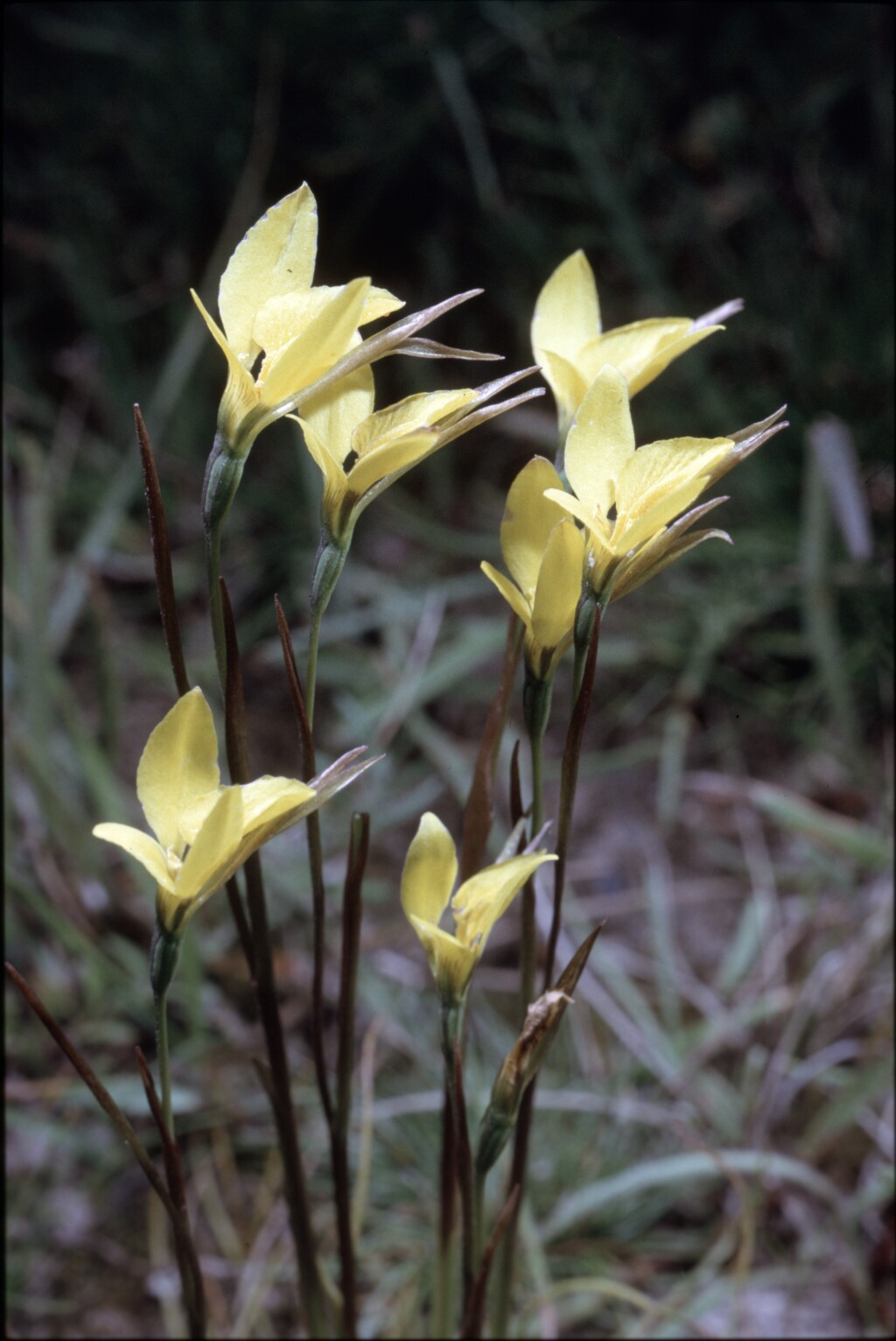Diuris ×fastidiosa
R.S.Rogers Proud DoubletailFlowering plant slender, 6–18 cm tall. Leaves mostly 3–8, linear, 3–10 cm long, somewhat twisted, in a loose, erect tussock. Flowers 1–3, erect, not opening widely, bright lemon yellow, with a few dark striations on base of the dorsal sepal; dorsal sepal erect, ovate, 7–10 mm long; lateral sepals obliquely erect, usually parallel, linear, 10–15 mm long, greenish brown; petals spreading widely, 6–10 mm long, claw greenish brown, lamina narrow-elliptic. Labellum obliquely erect, 7–10 mm long, 3-lobed; lateral lobes small, oblong-cuneate, outer margins toothed; mid-lobe flat or shallowly concave, c. 3 times as long as the lateral lobes, broadly ovate, narrowed at base, with 2 widely separated, pubescent, longitudinal ridges extending shortly beyond base, a single, less distinct ridge continuing towards the apex. Flowers Aug.–Sep.
Wim, VVP, GipP. Apparently endemic to Victoria. Known with certainty only from basalt plains grassland west of Melbourne.
This putative hybrid between D. chryseopsis (or D. basaltica or D. gregaria) and D. palustris can be distinguished from D. chryseopsis by its shorter petals and labellum and its erect (not nodding) flowers. It differs from D. palustris in the lateral lobes of the labellum being much smaller than the mid-lobe and in having less brown coloration on the petals and dorsal sepal.
Known from only 3 populations: at Tottenham on the basalt plains west of Melbourne (where now extinct), Derrinallum area on the basalt plains where it grows with D. gregaria and D. behrii (D. palustris has not been recorded for the site) and near Stawell (although this is probably D. behrii × D. palustris).
Hybrids between D. chryseopsis and D. palustris apparently do not occur in South Australia, but plants almost morphologically indistinguishable from D. ×fastidiosa are produced by the hybridization of D. behrii and D. palustris in that state (Bates & Weber 1990).
Entwisle, T.J. (1994). Orchidaceae. In: Walsh, N.G.; Entwisle, T.J., Flora of Victoria Vol. 2, Ferns and Allied Plants, Conifers and Monocotyledons, pp. 740–901. Inkata Press, Melbourne.
 Spinning
Spinning
